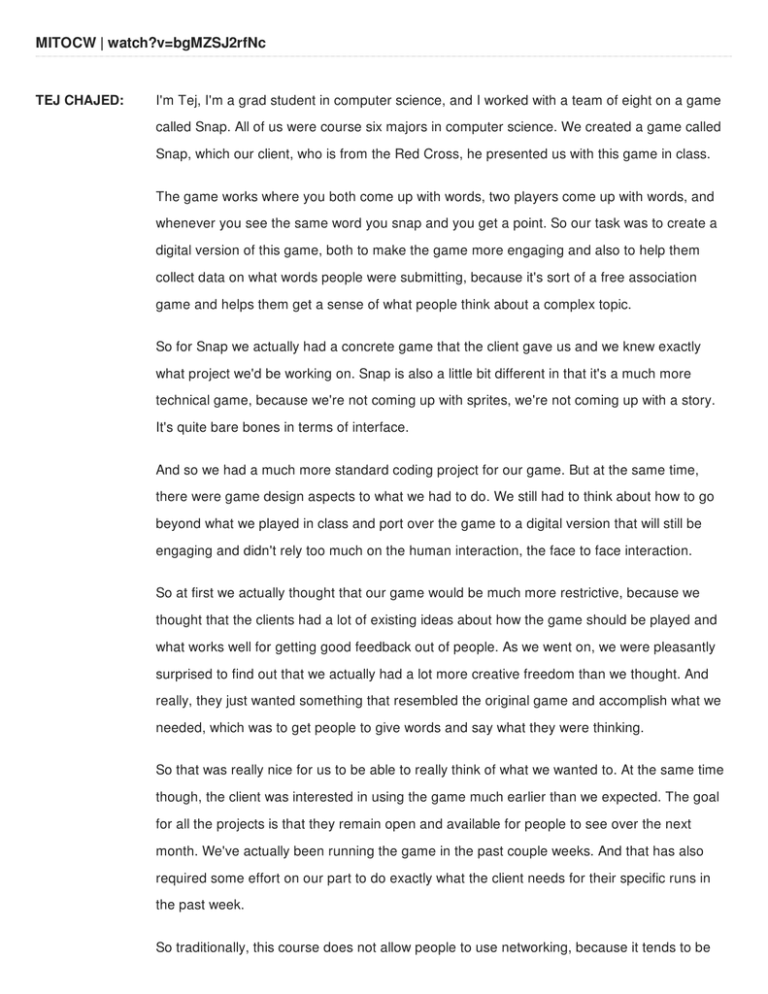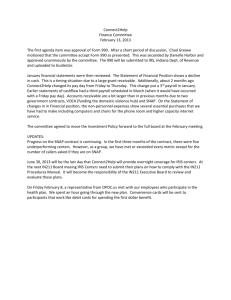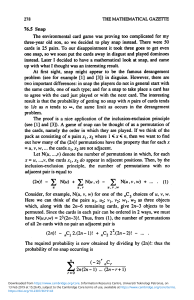MITOCW | watch?v=bgMZSJ2rfNc
advertisement

MITOCW | watch?v=bgMZSJ2rfNc TEJ CHAJED: I'm Tej, I'm a grad student in computer science, and I worked with a team of eight on a game called Snap. All of us were course six majors in computer science. We created a game called Snap, which our client, who is from the Red Cross, he presented us with this game in class. The game works where you both come up with words, two players come up with words, and whenever you see the same word you snap and you get a point. So our task was to create a digital version of this game, both to make the game more engaging and also to help them collect data on what words people were submitting, because it's sort of a free association game and helps them get a sense of what people think about a complex topic. So for Snap we actually had a concrete game that the client gave us and we knew exactly what project we'd be working on. Snap is also a little bit different in that it's a much more technical game, because we're not coming up with sprites, we're not coming up with a story. It's quite bare bones in terms of interface. And so we had a much more standard coding project for our game. But at the same time, there were game design aspects to what we had to do. We still had to think about how to go beyond what we played in class and port over the game to a digital version that will still be engaging and didn't rely too much on the human interaction, the face to face interaction. So at first we actually thought that our game would be much more restrictive, because we thought that the clients had a lot of existing ideas about how the game should be played and what works well for getting good feedback out of people. As we went on, we were pleasantly surprised to find out that we actually had a lot more creative freedom than we thought. And really, they just wanted something that resembled the original game and accomplish what we needed, which was to get people to give words and say what they were thinking. So that was really nice for us to be able to really think of what we wanted to. At the same time though, the client was interested in using the game much earlier than we expected. The goal for all the projects is that they remain open and available for people to see over the next month. We've actually been running the game in the past couple weeks. And that has also required some effort on our part to do exactly what the client needs for their specific runs in the past week. So traditionally, this course does not allow people to use networking, because it tends to be very buggy. It tends to be something that if it doesn't work, simply makes the whole game fall over flat. And we decided to violate this rule very early on. The rules are all suggestions, after all. And we were confident in our ability to do this, partly because we had a lot of experience with networking, with distributed systems. I actually work in distributed systems. And we also were experienced with the technologies that we were using, which definitely helped. I think that the learning curve for those technologies was a little bit more than we could have done in these eight weeks. So this course is nominally about creating video games, but in reality, as the instructors admitted, it's about project management. And I think that the course does a really good job of teaching you project management by example, by forcing you to actually do it. And I think that's why it's structured as four games as opposed to one big game, which is what you might expect. And I think that that was really useful for us to learn project management. Game development was a nice side benefit, but I don't think we learned a lot of game design. I think we just tried it and mostly we were learning, how do you manage a project, how do you manage a software project? Games are a little bit different in that the goal is fun and not so much coming from a client. The last project notwithstanding, mostly games are about you want to create something fun. I think the biggest challenge for us in Snap was getting people engaged, getting our team engaged in the project. There's a lot of other classes that people are taking and this is not necessarily the highest priority on everybody's list. And that was something that you really have to work around. You really have to find ways to get people engaged in the topic and get people to contribute where they can in the number of hours that they have available. So I don't know how completely successfully we were at getting people to contribute as many hours as we needed, but definitely part of it was making sure the tasks were very clear, so that not everybody was thinking about the whole game, but instead could think about their specific tasks and what they need to do on their part. And that was part of what the project management was, was making sure that people have the information they need to do the tasks that they need to get done without thinking about the whole project.


